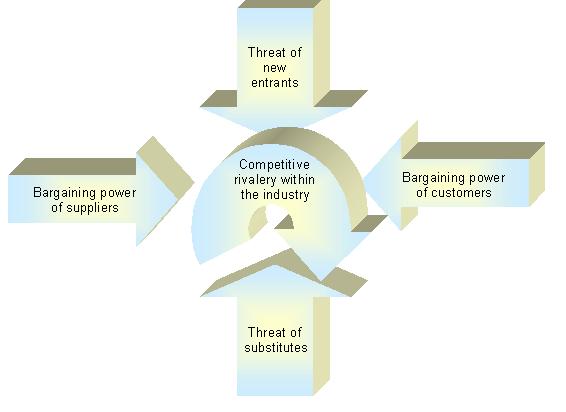A very brief account of certain important types of transactions conducted in the foreign exchange market is given below Spot and Forward Exchanges Spot Market: The term spot exchange refers to the class of foreign exchange transaction which requires the immediate delivery or exchange of currencies on the spot. In practice the settlement takes place within two days in most markets. The rate of exchange effective for the spot transaction is known as the spot rate and the market for such transactions is known as the spot market. Forward Market: The forward transactions is an agreement between two parties, requiring the delivery at some specified future date of a specified amount of foreign currency by one of the parties, against payment in domestic currency be the other party, at the price agreed upon in the contract. The rate of exchange applicable to the forward contract is called the forward exchange Continue reading
International Business
International Business Management deals with the maintenance and development of a multinational operation across national borders, whose manager has the knowledge and the skills to manage and handle cross-cultural processes, stakeholders and business environments in a right way.
Different Challenges Faced by the Multinational Companies (MNC’s)
A multinational company (MNC) is an enterprise that manages production or delivers services in more than one country. There are some challenges faced by MNC’s that transact business in international markets which can hinder its competitiveness hence its controversies and these are as follows; Market Imperfections It may seem strange that a corporation has decided to do business in a different country, where it doesn’t know the laws, local customs or business practices of such a country is likely to face some challenges that can reduce the manager’s ability to forecast business conditions. The additional costs caused by the entrance in foreign markets are of less interest for the local enterprise. Firms can also in their own market be isolated from competition by transportation costs and other tariff and non-tariff barriers which can force them to competition and will reduce their profits. The firms can maximize their joint income by Continue reading
Levels of International Strategy
The globalization of the economy, internationalization of businesses and emergence of new markets are all key themes in contemporary business. Whereas international business may once have been the province of organisations with sufficient scale and reach, these types of companies — typically multi-national corporations – no longer have a monopoly on this kind of business. Increasing numbers of firms, of varying scale, are confronted with compelling reasons for expanding their activities across multiple national boundaries. In some cases, such motivation includes the knowledge that success in international markets is a pre-requisite for survival; if competitor organisations succeed in international markets, they may achieve the scale and liquidity which affords them sustainable competitive advantage. There are mainly three levels of international strategy. They are; Corporate Strategy Business Strategy Functional Strategies Short description of these three are given bellow, 1. Corporate Strategy: Corporate strategy attempts to define the domain of businesses the Continue reading
Steps in Conducting a Foreign Market Analysis
International businesses have the fundamental goals of expanding market share, revenues, and profits. They often achieve these goals by entering new markets or by introducing new products into markets in which they already have a presence. A firm’s ability to do this effectively hinges on its developing a through understanding of a given geographical or product market. To successfully increase market share, revenue, and profits, firms must normally follow three steps, Assess alternative markets Evaluate the respective costs, benefits, and risks of entering each, and Select those that hold the most potential for entry or expansion. 1. Assessing Alternative Foreign Markets In assessing alternative foreign market a firm must consider a variety of factor including the current and potential sizes of the markets, the levels of competition the firm will face, their legal and political environment, and socio-cultural factors that may affect the firm’s operations and performance. Information about Continue reading
Sustaining international competitive advantage
Competitive advantage occurs when a firm is using a strategy that is currently not being currently implemented by any of its present and potential competitors. Sustainable competitive advantage continues to exist after the efforts by competitors to copy tat advantage continues to exist after the efforts by competitors to copy that competitive advantage have ceased. That means, the inability of competitors to copy the strategy makes for a sustainable competitive advantage. It is difficult to sustain a significant competitive advantage over a time without periodically revisiting the firm’s identity and purpose. For instance, reducing costs is not a true strategy because it simply provides a breathing space for the organization to formulate an appropriate strategy. The length of time over which a firm can maintain its competitive advantage is dependent on: – Replicability: how easy it is for the competitors to duplicate it. Transferability: how easy it is for the Continue reading
Porter’s Model of the Five Competitive Forces
The nature of competition in an industry in large part determines the content of strategy, especially business-level strategy. Based as it is on the fundamental economics of the industry, the very profit potential of an industry is determined by competitive interactions. Where these interactions are intense, profits tend to be whittled away by the activities of competing. Where they are mild and competitors appear docile, profit potential tends to be high. Yet a full understanding of the elements of competition within an industry is easy to overlook and often difficult to comprehend. Porter’s Competitive Forces Model is one of the most recognized framework for the analysis of business strategy. It is based on the insight that a corporate strategy should meet the opportunities and threats in the organizations external environment. Especially, competitive strategy should base on an understanding of industry structures and the way they change. Porter’s Competitive Forces Model Continue reading
